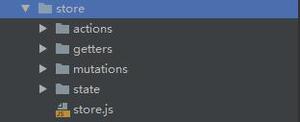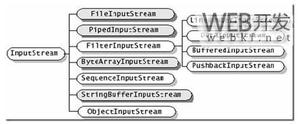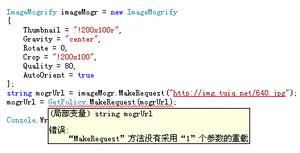Vue源码探究-全局API

本篇代码位于vue/src/core/global-api/
Vue暴露了一些全局API来强化功能开发,API的使用示例官网上都有说明,无需多言。这里主要来看一下全局API模块的实现。全局API的文件夹里有一个入口文件,各个功能分开定义,在这个入口文件中统一注入。
入口文件index.js
/* @flow */
// 从各个模块导入功能函数
import config from '../config'
import { initUse } from './use'
import { initMixin } from './mixin'
import { initExtend } from './extend'
import { initAssetRegisters } from './assets'
import { set, del } from '../observer/index'
import { ASSET_TYPES } from 'shared/constants'
import builtInComponents from '../components/index'
// 导入内部辅助函数
import {
warn,
extend,
nextTick,
mergeOptions,
defineReactive
} from '../util/index'
// 定义并导出initGlobalAPI函数
export function initGlobalAPI (Vue: GlobalAPI) {
// 定义全局配置对象
// config
const configDef = {}
// 定义配置对象的取值器函数
configDef.get = () => config
// 不允许在外部修改配置对象,非生产环境会给出警告
if (process.env.NODE_ENV !== 'production') {
configDef.set = () => {
warn(
'Do not replace the Vue.config object, set individual fields instead.'
)
}
}
// 定义Vue类的静态属性config
Object.defineProperty(Vue, 'config', configDef)
// 暴露工具方法
// exposed util methods.
// 注意:这不是全局公共API的一部分,
// 除非了解到它们会带来的风险否则请避免使用。
// NOTE: these are not considered part of the public API - avoid relying on
// them unless you are aware of the risk.
Vue.util = {
warn,
extend,
mergeOptions,
defineReactive
}
// 定义Vue的静态方法set、delete、nextTick
Vue.set = set
Vue.delete = del
Vue.nextTick = nextTick
// 初始化Vue.options属性为空对象
Vue.options = Object.create(null)
// 初始化options属性的各个子属性为空对象
ASSET_TYPES.forEach(type => {
Vue.options[type + 's'] = Object.create(null)
})
// 这用于标识“基础”构造函数
// 以在Weex的多实例场景中扩展所有普通对象组件
// this is used to identify the "base" constructor to extend all plain-object
// components with in Weex's multi-instance scenarios.
Vue.options._base = Vue
// 扩展options.components属性,加入内建组件
extend(Vue.options.components, builtInComponents)
// 向Vue类挂载静态方法
initUse(Vue)
initMixin(Vue)
initExtend(Vue)
initAssetRegisters(Vue)
}
入口文件从总体来讲可以分为两个部分:
定义静态属性
config:在最开始的部分定义了Vue的静态属性config,这是全局配置对象。options:稍后定义的options对象是非常重要的属性,存放初始化的数据,我们平时在创建Vue实例时传入的配置对象最终要与这份配置属性合并,在实例初始化函数中的合并配置对象一部分可以初窥端倪。
定义静态方法
util:虽然暴露了一些辅助方法,但官方并不将它们列入公共API中,不鼓励外部使用。set:设置响应式对象的响应式属性,强制触发视图更新,在数组更新中非常实用,不适用于根数据属性。delete:删除响应式属性强制触发视图更新, 使用情境较少。nextTick:结束此轮循环后执行回调,常用于需要等待DOM更新或加载完成后执行的功能。use:安装插件,自带规避重复安装。mixin:常用于混入插件功能,不推荐在应用代码中使用。extend:创建基于Vue的子类并扩展初始内容。directive:注册全局指令。component:注册全局组件。filter:注册全局过滤器。
除了后6个方法之外,其他的辅助函数和方法都已经在其他模块里见识过了,继续来详细探索一下剩下的6个功能。initAssetRegisters 方法为Vue类注册的全局函数包括了 directive、component、filter,三个方法合在一个模块里,其余都分了各自的模块来定义。
全局API use
// 导入toArray辅助函数
import { toArray } from '../util/index'
// 定义并导出initUse函数
export function initUse (Vue: GlobalAPI) {
// 定义Vue类静态方法use,接受插件函数或对象
Vue.use = function (plugin: Function | Object) {
// 定义内部属性installedPlugins,存放已安装插件
// 首次应用时定义为空数组
const installedPlugins = (this._installedPlugins || (this._installedPlugins = []))
// 检测是否安装过传入的插件,已存在则返回
if (installedPlugins.indexOf(plugin) > -1) {
return this
}
// 处理附加参数,加入参数Vue
// additional parameters
// 将传入的参数转化为数组
const args = toArray(arguments, 1)
// 插入Vue类本身为第一个元素
args.unshift(this)
// 如果插件有install方法,则在plugin对象上调用并传入新参数
if (typeof plugin.install === 'function') {
plugin.install.apply(plugin, args)
} else if (typeof plugin === 'function') {
// 如果plugin本身是函数,则直接调用并传入新参数
plugin.apply(null, args)
}
// 向缓存插件数组中添加此插件并返回
installedPlugins.push(plugin)
return this
}
}
use 方法的实现很简单,在内部定义了数组来缓存已经注册过的插件,并在下一次注册前检验是否已注册过,可以避免重复注册插件。接受的参数值得注意,如果插件本身就是一个函数,则直接调用;如果插件是对象,则必须有install方法,否则没有任何行为,这是Vue为了统一插件定义规范所设置的入口方法名称。
全局API mixin
// 导入mergeOptions辅助函数
import { mergeOptions } from '../util/index'
// 定义并导出initMixin函数
export function initMixin (Vue: GlobalAPI) {
// 定义Vue的静态方法mixin
Vue.mixin = function (mixin: Object) {
// 合并配置对象,重置Vue类的静态属性options
this.options = mergeOptions(this.options, mixin)
// 返回
return this
}
}
mixin 方法的实现更加简洁,在重用Vue类的所有状态下,只是重新合并了options属性。由于使用场景大都是用来混入插件功能的,所以创建项目时几乎没有运用,了解即可。
全局API extend
// 导入资源类型,模块方法和辅助方法
import { ASSET_TYPES } from 'shared/constants'
import { defineComputed, proxy } from '../instance/state'
import { extend, mergeOptions, validateComponentName } from '../util/index'
// 定义并导出initExtend
export function initExtend (Vue: GlobalAPI) {
// 每个实例构造函数,包括Vue都有唯一的cid。
// 这使我们能够为原型继承创建包装的“子构造函数”并缓存它们。
/**
* Each instance constructor, including Vue, has a unique
* cid. This enables us to create wrapped "child
* constructors" for prototypal inheritance and cache them.
*/
// 设置Vue的cid为0
Vue.cid = 0
// 定义cid变量
let cid = 1
// 定义类继承方法
/**
* Class inheritance
*/
// 定义Vue类静态方法extend,接受扩展选项对象
Vue.extend = function (extendOptions: Object): Function {
// extendOptions若未定义则设置为空对象
extendOptions = extendOptions || {}
// 存储父类和父类的cid
const Super = this
const SuperId = Super.cid
// 定义缓存构造器对象,如果扩展选项的_Ctor属性未定义则赋值空对象
const cachedCtors = extendOptions._Ctor || (extendOptions._Ctor = {})
// 如果缓存构造器已存有该构造器,则直接返回
if (cachedCtors[SuperId]) {
return cachedCtors[SuperId]
}
// 获取扩展配置对象名称或父级配置对象名称属性,赋值给name
const name = extendOptions.name || Super.options.name
// 在非生产环境下验证name是否合法并给出警告
if (process.env.NODE_ENV !== 'production' && name) {
validateComponentName(name)
}
// 定义子类构造函数
const Sub = function VueComponent (options) {
this._init(options)
}
// 实现子类原型继承,原型指向父类原型,构造器指向Sub
Sub.prototype = Object.create(Super.prototype)
Sub.prototype.constructor = Sub
// 定义子类cid,并递增cid
Sub.cid = cid++
// 定义子类options属性,合并配置对象
Sub.options = mergeOptions(
Super.options,
extendOptions
)
// 定义子类super属性,指向父类
Sub['super'] = Super
// 对于props和computed属性,扩展时在Vue实例上定义了代理getter。
// 这避免了对每个创建的实例执行Object.defineProperty调用。
// For props and computed properties, we define the proxy getters on
// the Vue instances at extension time, on the extended prototype. This
// avoids Object.defineProperty calls for each instance created.
// 初始化子类的props
if (Sub.options.props) {
initProps(Sub)
}
// 初始化子类的计算属性
if (Sub.options.computed) {
initComputed(Sub)
}
// 定义子类的全局API,扩展、混入和使用插件
// allow further extension/mixin/plugin usage
Sub.extend = Super.extend
Sub.mixin = Super.mixin
Sub.use = Super.use
// 创建子类的资源注册方法,允许子类有私有资源
// create asset registers, so extended classes
// can have their private assets too.
ASSET_TYPES.forEach(function (type) {
Sub[type] = Super[type]
})
// 启用递归自查找
// enable recursive self-lookup
if (name) {
Sub.options.components[name] = Sub
}
// 在扩展时保持对父类配置对象的引用,
// 以后实例化时可以检查父级配置对象是否更新
// keep a reference to the super options at extension time.
// later at instantiation we can check if Super's options have
// been updated.
Sub.superOptions = Super.options
Sub.extendOptions = extendOptions
Sub.sealedOptions = extend({}, Sub.options)
// 缓存子类构造函数
// cache constructor
cachedCtors[SuperId] = Sub
// 返回
return Sub
}
}
// 定义初始化propss函数
function initProps (Comp) {
// 获取配置对象的props属性
const props = Comp.options.props
// 设置代理
for (const key in props) {
proxy(Comp.prototype, `_props`, key)
}
}
// 定义初始化计算属性函数
function initComputed (Comp) {
// 获取配置对象的computed属性
const computed = Comp.options.computed
// 设置代理
for (const key in computed) {
defineComputed(Comp.prototype, key, computed[key])
}
}
extend 方法是最为复杂的全局API了,它在扩展类实现继承时进行了很多处理:除去判断是否有已存储的子类构造函数之外,首先是实现类继承,原理是原型式继承;然后为子类初始化props和computed属性的代理:最后是扩展全局API。另外对继承的父类的属性也进行了引用存储。
全局API 资源获取和注册
// 导入资源类型和辅助函数
import { ASSET_TYPES } from 'shared/constants'
import { isPlainObject, validateComponentName } from '../util/index'
// 定义并注册initAssetRegisters函数
export function initAssetRegisters (Vue: GlobalAPI) {
// 创建资源注册方法
/**
* Create asset registration methods.
*/
// 遍历ASSET_TYPES数组,为Vue定义相应方法
// ASSET_TYPES包括了directive、 component、filter
ASSET_TYPES.forEach(type => {
// 定义资源注册方法,参数是标识名称id,和定义函数或对象
Vue[type] = function (
id: string,
definition: Function | Object
): Function | Object | void {
// 如果未传入definition,则视为获取该资源并返回
if (!definition) {
return this.options[type + 's'][id]
} else {
// 否则视为注册资源
// 非生产环境下给出检验组件名称的错误警告
/* istanbul ignore if */
if (process.env.NODE_ENV !== 'production' && type === 'component') {
validateComponentName(id)
}
// 如果是注册component,并且definition是对象类型
if (type === 'component' && isPlainObject(definition)) {
// 设置definition.name属性
definition.name = definition.name || id
// 调用Vue.extend扩展定义,并重新赋值
definition = this.options._base.extend(definition)
}
// 如果是注册directive且definition为函数
if (type === 'directive' && typeof definition === 'function') {
// 重新定义definition为格式化的对象
definition = { bind: definition, update: definition }
}
// 存储资源并赋值
this.options[type + 's'][id] = definition
// 返回definition
return definition
}
}
})
}
initAssetRegisters 包含有三,分别是 directive、component、filter 的注册并获取方法。方法的作用视参数而定,只传入资源标识名称ID未传定义函数或对象,则视为获取资源方法,如果都传则是资源注册方法,可谓是非常js化的。比较重要的是这里对于 definition 参数的重赋值,根据资源的种类不同,会进行不同的处理:组件主要是扩展Vue类,指令是格式化成定义对象,方便之后对指令的统一处理。
全局API的细节大概就是以上这些,对于经常使用的方式,了解其具体实现可以帮助我们在应用时避免出现不必要的错误,对于不经常使用的方法,在探索其实现时可以学习它们的实现原理和良好的方式。重要是在实践中分清楚每一个方法的使用场景,选取最恰当的方式实现功能。
原文地址:https://segmentfault.com/a/1190000017359796
以上是 Vue源码探究-全局API 的全部内容, 来源链接: utcz.com/z/379322.html









